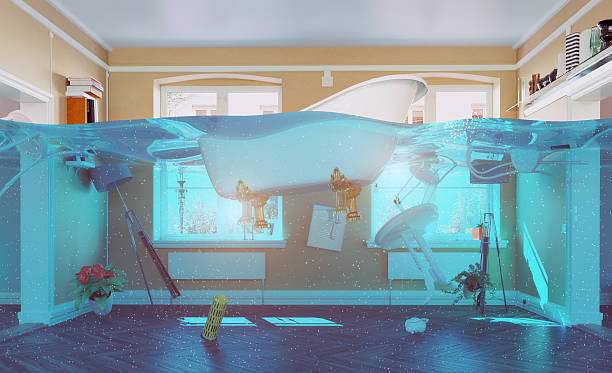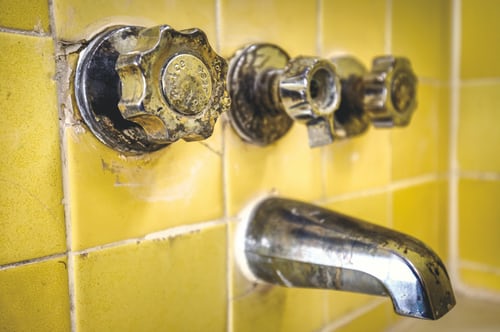Exactly how to Prevent Bathroom Water Damage
Exactly how to Prevent Bathroom Water Damage
Blog Article
They are making a few great pointers relating to How to Repair and Prevent Bathroom Water Damage? overall in this great article further down.

Water damage commonly occurs in the bathroom because of the water made use of day-to-day. Often, the damage could be a little mold from the shower. Various other times, it's substantial damage on your floor. Whatever it is, it is constantly excellent to understand the cause and also stop it before it happens.
This overview will certainly undergo some of the usual root causes of water damage in the restroom. We will additionally examine what you can do to prevent these reasons from damaging your washroom. Let's dive in.
5 Common Sources Of Water Damage in Shower Rooms
These are the common factors you would have water damage in your bathrooms and also exactly how you can spot them:
Ruptured or Leaking Pipelines
There are numerous pipes bring water to different parts of your washroom. Some pipes take water to the commode, the sink, the taps, the shower, as well as many various other places. They crisscross the little location of the restroom.
Once in a while, these pipes can get corroded and ruptured. Various other times, human action can cause them to leakage. When this takes place, you'll discover water in the edges of your bathroom or on the wall surface.
To detect this, watch out for gurgling walls, molds, or mold. Call a professional emergency situation plumber to fix this when it occurs.
Splits in your wall ceramic tilesv
Washroom wall ceramic tiles have actually been specially created for that objective. They protect the wall from dampness from individuals taking showers. However, they are not unbreakable.
Occasionally, your bathroom wall ceramic tiles split and also allow some wetness to leak right into the wall. This can potentially destroy the wall if you don't take any type of activity. If you see a split on your wall surface tiles, fix it instantly. Don't wait until it ruins your wall.
Overflowing bathrooms as well as sinks
As people, often we make errors that could cause some water damage in the washroom. As an example, leaving your sink faucet on might cause overflowing and also damages to other parts of the restroom with moisture.
Additionally, a damaged bathroom could create overruning. For instance, a broken commode deal with or other parts of the cistern. When this takes place, it can harm the floor.
As soon as you see an overruning sink or bathroom, call a plumbing technician to help deal with it quickly.
Roof covering Leakages
In some cases, the problem of water damage to the washroom may not come from the washroom. For instance, a roofing system leak can trigger damage to the restroom ceiling. You can spot the damages done by checking out the water spots on the ceiling.
If you find water stains on your ceiling, examine the roofing to see if it's damaged. After that, call an expert to assist solve the concern.
Excess Dampness
It's cool to have that long shower and splash water while you hem and haw and also imitate you're executing, yet occasionally these acts might trigger water damage to your shower room.
Sprinkling water around can trigger water to go to corners and create mold and mildews. See just how you spread excess moisture around, and when you do it, clean it up to stop damages.
Verdict
Water damage to your washroom can be aggravating. However, you can handle it if you prevent some of the reasons stated in this overview. Call an expert emergency plumbing if you notice any extreme damages.
Common Causes of Water Damage in a Bathroom
Water damage can appear virtually anywhere in your home, but bathrooms and basements are the two most common areas. It’s easier to spot causes and signs of water damage in an unfinished basement, but that doesn’t mean it’s any less severe to have water damage occur in your bathroom.
Spotting Signs of Bathroom Water Damage
The bathroom is probably the most common place where you’ll use water in your home. Because of this, there’s a relatively high risk of sustaining water damage. The longer water damage goes untreated, the worse it can get. Therefore, you need to know what signs to look for and deal with any damage as soon as possible.
There are often items like rugs, bottles, towels, and so on crammed in every corner of the typical bathroom, which can trap moisture and hide budding problems. But what usually causes the most water damage in a bathroom? How can you spot it, especially with so many items in the way? This article addresses several common ways to notice, prevent, or fix bathroom water damage.
A Recurring or Persistent Musty Odor
Wherever there’s water damage, you almost always find small spots of mold, or even a full-blown infestation. When you leave mold to thrive and grow, it creates a stinking, musty odor that’s pretty hard to miss. Don’t leave musty smells unaddressed—try to find the source so that you can have it repaired before more damage occurs.
Damaged Grout or Caulk
When these sealing agents fail, virtually nothing prevents water from seeping past the barrier, causing water damage and mold growth underneath wall and flooring tiles. Damaged showerheads, spigots, grout, or caulking, combined with excessive moisture, create the perfect environment for mold to thrive.
Loose Tiles or Spongy Floors
Moldy and water-damaged walls make it more difficult for tiles to stay in place, which can cause them to become loose. In addition, persistent moisture on a bathroom floor can result in water damage to the subflooring layer, causing it to degrade, lose integrity, and feel spongy.
Stubborn Growth
If there’s visible mold in your bathroom that you’ve removed more than once, the most likely reason it keeps coming back is a deeper infestation in the walls or floors. It’s critical to deal with this problem immediately to prevent further damage and new or worsening health issues.
https://advantaclean.com/blog/common-causes-of-water-damage-in-a-bathroom/

Common Causes of Water Damage in a Bathroom
Water damage can appear virtually anywhere in your home, but bathrooms and basements are the two most common areas. It’s easier to spot causes and signs of water damage in an unfinished basement, but that doesn’t mean it’s any less severe to have water damage occur in your bathroom.
Spotting Signs of Bathroom Water Damage
The bathroom is probably the most common place where you’ll use water in your home. Because of this, there’s a relatively high risk of sustaining water damage. The longer water damage goes untreated, the worse it can get. Therefore, you need to know what signs to look for and deal with any damage as soon as possible.
There are often items like rugs, bottles, towels, and so on crammed in every corner of the typical bathroom, which can trap moisture and hide budding problems. But what usually causes the most water damage in a bathroom? How can you spot it, especially with so many items in the way? This article addresses several common ways to notice, prevent, or fix bathroom water damage.
A Recurring or Persistent Musty Odor
Wherever there’s water damage, you almost always find small spots of mold, or even a full-blown infestation. When you leave mold to thrive and grow, it creates a stinking, musty odor that’s pretty hard to miss. Don’t leave musty smells unaddressed—try to find the source so that you can have it repaired before more damage occurs.
Damaged Grout or Caulk
When these sealing agents fail, virtually nothing prevents water from seeping past the barrier, causing water damage and mold growth underneath wall and flooring tiles. Damaged showerheads, spigots, grout, or caulking, combined with excessive moisture, create the perfect environment for mold to thrive.
Loose Tiles or Spongy Floors
Moldy and water-damaged walls make it more difficult for tiles to stay in place, which can cause them to become loose. In addition, persistent moisture on a bathroom floor can result in water damage to the subflooring layer, causing it to degrade, lose integrity, and feel spongy.
Stubborn Growth
If there’s visible mold in your bathroom that you’ve removed more than once, the most likely reason it keeps coming back is a deeper infestation in the walls or floors. It’s critical to deal with this problem immediately to prevent further damage and new or worsening health issues.
https://advantaclean.com/blog/common-causes-of-water-damage-in-a-bathroom/
We had been shown that report on How to Repair and Prevent Bathroom Water Damage? from a friend on a different website. Do you know about another person who is fascinated by the niche? Take a moment to promote it. Thank you so much for your time invested reading it.
Book Service Report this page